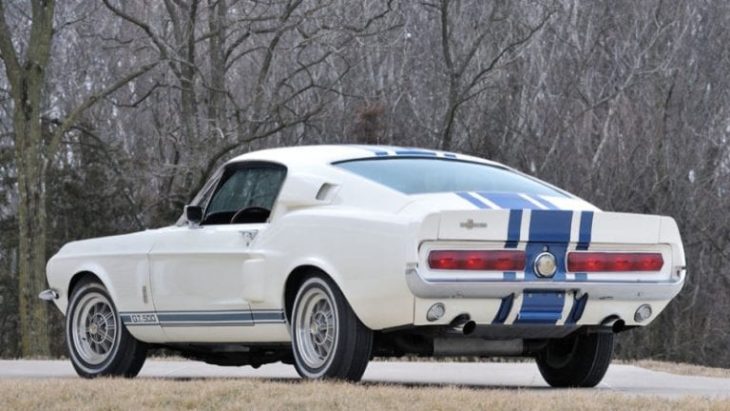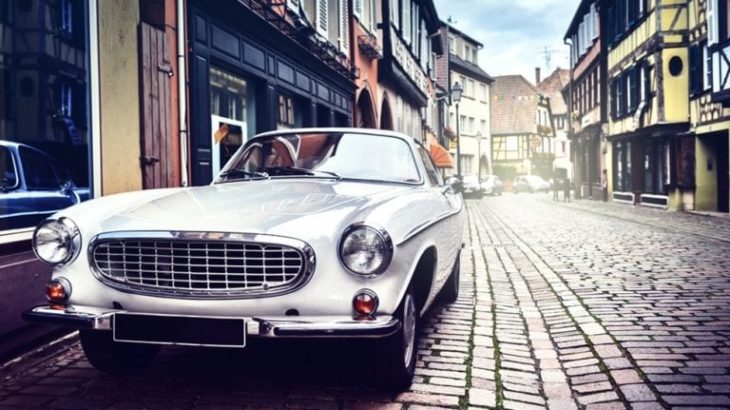Most automobiles depreciate in value over time. It is common for most cars to be worth half of what you paid for them after 2 or 3 years. However, the obvious exception is classic, or vintage, cars and because of this, require a special type of classic car insurance.
A classic car almost always means more to its owner than just another vehicle. It often represents a piece of history, great memories of the past, or countless hours spent rebuilding or restoring a beautiful car and needs to be insured with classic car insurance.
The normal car insurance rules don’t necessarily apply to classic cars for various reasons. The Blue Book value of a car from the 1970’s would suggest that it is only worth a few hundred dollars. Using typical car insurance concepts, you would think a 1967 Shelby GT500 would cost a few hundred dollars to insure.

Source: jalopnik.com
So, what kind of car insurance can a classic car owner purchase to ensure that in the event of loss, theft, or an accident, he would receive the full real value of his classic car?
Contents
Actual Cash Value
Actual cash value is what the insurance company believes your vehicle is worth. When you file a claim with the insurer, they reimburse you for your loss – a check for what the car is worth at the time. This dollar amount is the actual cash value (ACV).
For example, if you bought an Infiniti G35 for $35,000 three years ago, its ACV now may only be $20,000 – and that is what the provider will pay you to make you whole again.
The Actual Cash Value concept is a problem for classic car owners. Since their vehicles don’t have auto loans attached or follow typical depreciation trends and actually appreciate in value, the conventional valuation process is not applicable.Basically, standard car insurance ratings factors don’t apply to classic cars, and therefore the process is much more complex and subjective.
The next step is to figure out how a classic car owner demonstrates the real value of their classic car to the insurer.

Source: ET Auto
Hire An Appraiser
A professional appraiser has the expertise and knowledge to provide a written document testifying the actual cash value of the vintage car to the car insurance company. This way, if anything happens, both parties have accurate, official documentation as to the value of the classic car, and the policyholder/classic car owner knows about how much he will be compensated for filing his claim. Many vintage car dealers who offer classic car consignment, such as Hyman LTD, will either offer appraisals as a service or they will have the experience needed to give you an accurate assessment of the value of your vehicle.
Take Pictures
Pictures are great additional pieces of evidence regarding the value of your classic automobile. Car collectors should take interior and exterior photos of their classic cars, and submit these photos to the company along with the appraisal. This provides visual evidence that the car has actually been restored and is in mint condition.

Source: Pinterest
Stated Value Coverage
The disadvantage with actual cash value is that sometimes the market value of the car has increased substantially over time, or that the actual cash value does not accurately reflect the market value other car collectors may be willing to pay for it.
Also, most car insurance providers will not cover physical damage or repairs of a classic car after it has aged over 20 years, and thus not honor the ACV.
To avoid this financial downfall, use an option known as Stated Value Coverage, or SVC. Stated Value Coverage established an amount the auto insurance company agrees to pay in the event of a loss.
It is important to remember that if the classic car continues to appreciate in value, then the car insurance company will not pay more. Classic car owners may choose to regularly re-negotiate the vehicles stated value.
However, as always, no option comes without disadvantages. If a classic car’s value falls below the stated value, insurers will not necessarily pay the stated value either. Instead, an insurer will issue a check for the market value of the vehicle.
For example, a fully restored 1967 Pontiac GTO may have a stated value of $100,000, but the market value drops to $80,000. The company will pay for the lesser of the two dollar amounts.
However, if the market value is more than the stated value, the auto insurance company will only pay the stated value, and the stated value is the amount of coverage the carrier will charge its car insurance rates on.

Source: Turtlemint
Agreed Value Coverage
Lastly, there is Agreed Value Coverage, which is the most attractive option for classic car owners. It is a contractual agreement between you and the provider that states the value of the car based on photos – no appraisal is needed. Unlike Stated Value, Agreed Value is the guaranteed amount an insurer will pay you for an approved claim.
The ironic thing about Agreed Value Coverage is that is usually cheaper than a Stated Value policy. For instance, the Hagerty Classic Insurance Company boasts that their policies cost on average 37% less than a standard policy. A ‘67 Chevy worth $30,000 is quoted at a rate of $273 per year.
The downside is that some classic car insurance companies who offer Agreed Value Coverage are restrictive on who they underwrite and insure. An applicant must not have more than two minor traffic violations in the last two years, and can’t have any major violations (such as reckless driving or a DUI) in the last five years, sometimes ten. These points can certainly add up against you and cost drivers huge rate increases.
Also, classic vehicles covered are subject to mileage limits and are not allowed to be used on a daily basis, meaning the household must have another insured car for daily commutes.
In addition, the classic car insurance company will only insure “classic cars” that meet certain requirements: either the car must be at least 15 –20 years old or has to be considered rare based on limited quantities produced. And finally, the classic car must be stored in a safe, secure garage.
Classic car insurance may have some complicated requirements and options, but these companies offer some great benefits, such as restoration coverage, spare part coverage, and overseas touring coverage. No matter what, this is why owners should always compare premiums.

Source: NerdWallet
Classic Car Insurance Quotes
Although Agreed Value Coverage tends to be the most popular choice among classic car owners, balancing cost, coverage, and terms, but it is important to compare car insurance quotes for classic cars just as you would normal auto insurance. Evaluate your options and decide which car company is best to work with by getting multiple classic car insurance quotes.
